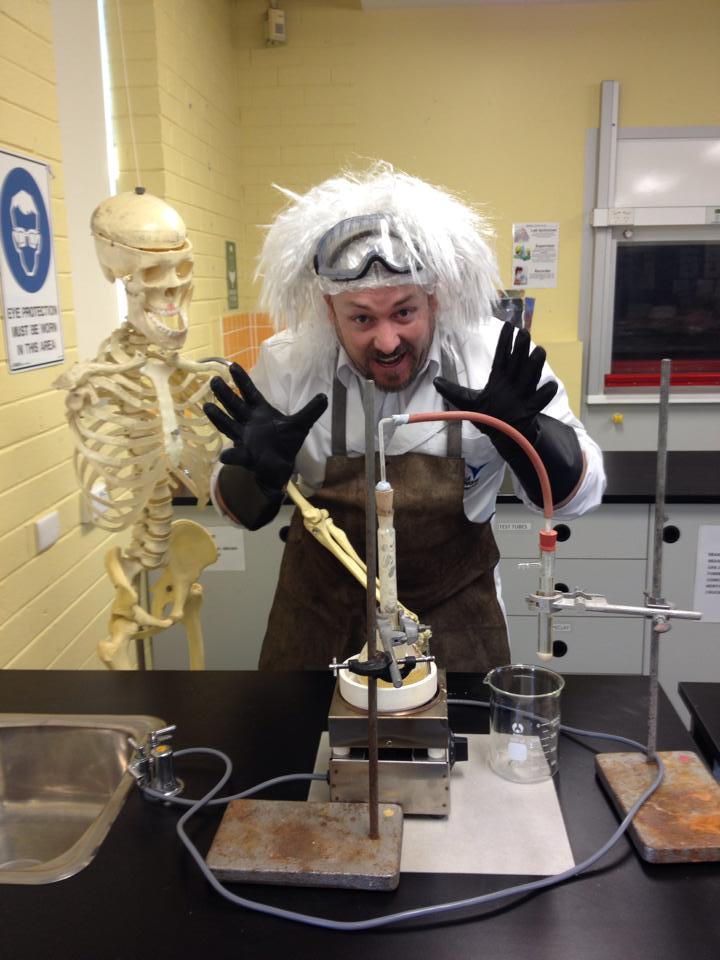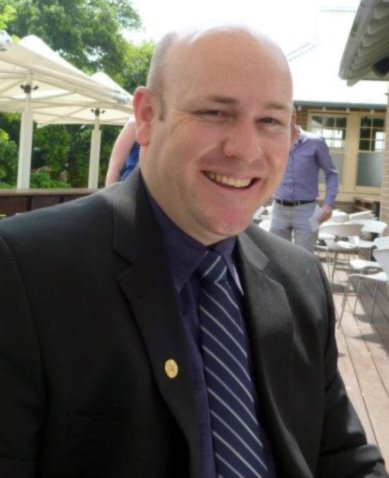By Murray Henstock
This is the 6th GAM article for the Diverse Universe Week, Monday 18 to Sunday 24 April 2016. This week's posts on the GAM Blog will focus on the diversity of the global astronomy community.

How can students from diverse backgrounds access a universal world of wonder that cares not for where you come from. Nor does it make discriminations based on creed, race, religion or preference. The sky is there for everyone. It blankets us all as one community as it shows us all one past and an infinite array of possibilities for the future.
It asks only one thing. That we look up and wonder.
For one school community in south western Sydney, Australia, it began in 2012 with a single 102mm StarNavigator refractor telescope, a cool autumn evening and a Year 7 ‘Welcome-to-School’ BBQ.
Celestial mechanics had aligned just right that afternoon to allow a crescent moon to be visible above the school yard from about 5:00pm. A last minute decision to bring along my telescope from home provided an opportunity for parents and students to get a glimpse of our nearest celestial neighbour up close, during relative daylight. It was something many of the students, their families and some visiting members of the community never had the chance to do before.
As they peered into the eye piece the intake of breath was a sincere Galilean moment for many of our guests. As a teacher I often describe to my students what Galileo must have felt looking upon the moon for the first time up close and seeing it in all its majestic imperfection. To many the moon was a just round bright orb in the sky. Some of the students yet to learn why it shines or even where it goes when it’s not above them. Some still confused why they could see it during the day at all. It was a chance to engage new and old students as well as their parents, family and members of the local community in a very tangible way.
Over 20 different nationalities and backgrounds were represented in the group that gathered around that one small telescope, each taking turns to look through the eyepiece, taking instruction on how to frame and focus the image to get the best view. It was a chance to bring a diverse community together in a common shared interest.
But whilst the magnificent moon was highlight for many, what happened next was perhaps even more profound and gave, not just me but the student who discovered it as well, goose bumps.
As the crowd began to thin and the sky began to darken, one student noticed a bright ‘star’ appearing near the crescent of the moon. They wanted to know what it was. The curiosity drew the crowd back as I instructed them how to move the telescope, change the eyepiece and refocus image. The gasp that escaped the student’s lips made us all jump. She slowly looked up at us with shock and awe etched on her face as she stepped back allowing the others to take their turns. Each person viewing experienced with a similar reaction.
They had, for the first time just like Galileo, seen Jupiter, its patterned cloud formations and the Great Red Spot along with its 4 moons stretched out into the void.
For most they had previously only either read about it or seen it through computer generated videos of the planets and had remained, up until now, surreal and imaginary.
But here, on the grounds of the school courtyard one autumn afternoon, they had not only seen the surface of the moon but also another planet with their own eyes. The only thing between them was some ground glass lenses that helped make things look bigger.
From that point on they shared a common experience. It was the beginnings of another communal bond to be shared between parents, students and community members. A bond that has allowed the school since then to conduct annual community astronomy nights which have now grown to host over 100 guests each time including community VIPs, visiting astronomers from MacArthur Astronomical Society, Sutherland Astronomical Society and Ice In Space Astronomical Society as well as guest speakers including Ms Jackie Slaviero and Dr Simon O'Toole.
Such is the excitement generated by Astronomy in our community that during GAM 2016 students from across the school representing a wide range of diverse backgrounds are chipping in to make the school’s first 3.6m diameter recycled cardboard planetarium to take their astronomical journey one step closer to the stars.
This is the power of Astronomy to bring the community together. The power of the stars to fascinate us all allowing us to draw on the vast array of cultural understandings of the cosmos from in order to paint a colourful picture of what the heavens have meant to us all over the eons past and what they mean to us as we head into the future together.
One body of explorers seeking to understand our communal place in the cosmos.
 Murray Henstock MACE is a professional educator specialising in STEM through Science, Astronomy, Robotics and Education through experiential outdoor learning. He is a member of the Inspiring Science Network, a mentor facilitator for the UTS [email protected] Science Summer School, a participant in the Galileo Teacher Training Program (GTTP), the National Australian Maths and Science Partnership Program (AMSPP) and a recipient of the Honeywell Educators @ Space Academy scholarship in 2013. Murray has not only attended Space Camp USA in Huntsville Alabama, he was also part of the team taking a number of Australian students to Space Camp Turkey in 2014. Murray has spent the last 16 years involved in developing and delivering youth and personal development programs aboard tall ships culminating in the development of a personal development program that can be adapted to any vessel or situation at land or sea. He now runs the Robotics, STEM Exploratorium and Astronomy programs at school and is developing a series of cross KLA STEM programs and units of work based on Space Exploration and its impact on humanity.
Murray Henstock MACE is a professional educator specialising in STEM through Science, Astronomy, Robotics and Education through experiential outdoor learning. He is a member of the Inspiring Science Network, a mentor facilitator for the UTS [email protected] Science Summer School, a participant in the Galileo Teacher Training Program (GTTP), the National Australian Maths and Science Partnership Program (AMSPP) and a recipient of the Honeywell Educators @ Space Academy scholarship in 2013. Murray has not only attended Space Camp USA in Huntsville Alabama, he was also part of the team taking a number of Australian students to Space Camp Turkey in 2014. Murray has spent the last 16 years involved in developing and delivering youth and personal development programs aboard tall ships culminating in the development of a personal development program that can be adapted to any vessel or situation at land or sea. He now runs the Robotics, STEM Exploratorium and Astronomy programs at school and is developing a series of cross KLA STEM programs and units of work based on Space Exploration and its impact on humanity.







